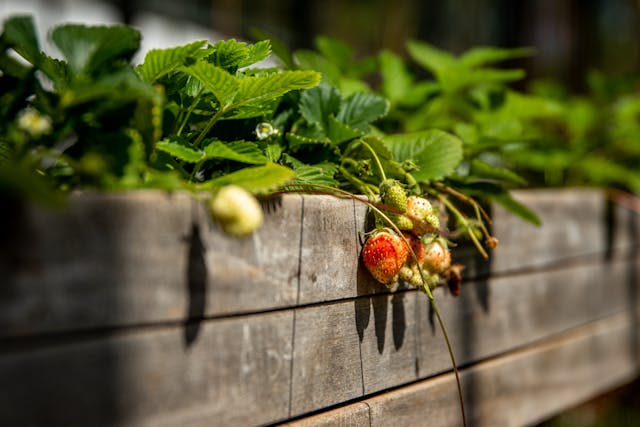Physical Address
304 North Cardinal St.
Dorchester Center, MA 02124
Physical Address
304 North Cardinal St.
Dorchester Center, MA 02124

Raised beds are a fantastic way to grow a thriving garden, whether you’re planting vegetables, herbs, or flowers. They offer better soil control, improved drainage, and an easier gardening experience—especially for those with limited space or mobility issues. In this guide, we’ll explore the best planting schemes for raised beds, companion planting strategies, and essential tips to maximize your harvest.
Raised beds are an excellent gardening solution for various reasons:
Improved Soil Quality: You control the soil composition, ensuring optimal nutrients and aeration.
Better Drainage: Excess water drains away easily, preventing root rot.
Extended Growing Season: Raised beds warm up faster in spring, allowing earlier planting.
Higher Yields: Closer planting in nutrient-rich soil leads to more abundant harvests.
Ease of Maintenance: Reduced bending and weeding make gardening more comfortable.
Now, let’s dive into the best planting schemes for raised beds and explore which plants grow best together.
Companion planting is key to a successful raised bed garden. By grouping certain plants, you can enhance growth, deter pests, and improve yields.
Pair tomatoes with basil to enhance flavor and repel pests like mosquitoes and aphids. Marigolds also help by deterring nematodes. Other good companions include:
Basil is an ideal companion for sweet peppers, improving their flavor and protecting against insects. Other great companions include:
Onions deter carrot flies, making them an excellent match for carrots. Additional companions include:
Green beans thrive alongside corn, which acts as a natural trellis. Beans also fix nitrogen in the soil, benefiting:
To keep slugs away from lettuce, plant mint nearby. Other helpful companion plants include:
Marigolds and nasturtiums protect cucumbers from aphids and beetles. Additional companions include:
Squash pairs well with corn, which provides natural support. Other beneficial companions include:
Tomatoes produce solanine, a natural pesticide that protects carrots. Carrots also aerate the soil for tomato roots. Other ideal companions include:
Radishes break up soil, making it easier for carrots to grow. Other good companions include:
Green beans and corn support each other well—beans fix nitrogen, while corn provides a trellis. Other companions include:
To make the most of your raised bed, follow these essential tips:

Raised beds can be built using wood, metal, concrete, or plastic. If using wood, opt for rot-resistant varieties like cedar or redwood.
Avoid garden soil with too much clay or sand. Instead, use a high-quality potting mix enriched with compost and organic matter.
Use slow-release organic fertilizers and follow package instructions to maintain soil fertility.
Certain vegetables thrive particularly well in raised beds:
Root Vegetables: Carrots, beets, radishes, turnips
Leafy Greens: Lettuce, spinach, kale
Heavy Feeders: Tomatoes, onions, potatoes
Climbing Plants: Beans, peas, cucumbers
Adding flowers to raised beds enhances pollination and repels pests. Here are some top choices:
Marigolds: Repel mosquitoes and nematodes.
Nasturtiums: Protect vegetables from aphids.
Lavender: Attracts bees and repels mosquitoes.
Sunflowers: Hardy and attract pollinators.
Zinnias: Provide vibrant color and attract butterflies.
Raised beds offer a versatile and efficient way to grow a bountiful garden. By using strategic companion planting, proper spacing, and quality soil, you can maximize your harvest while reducing maintenance. Whether you’re a beginner or an experienced gardener, these tips will help you design the perfect raised bed layout.
Have you tried raised bed gardening? Share your experiences in the comments below!